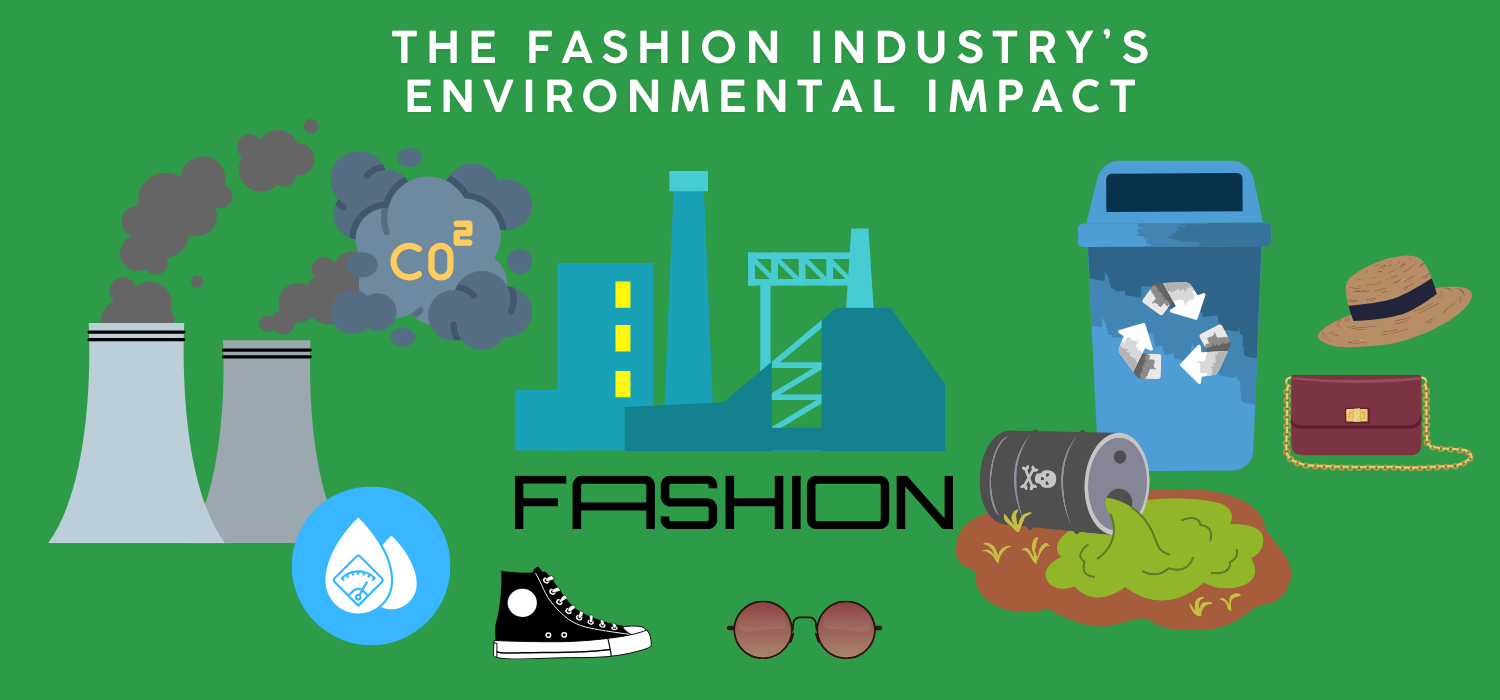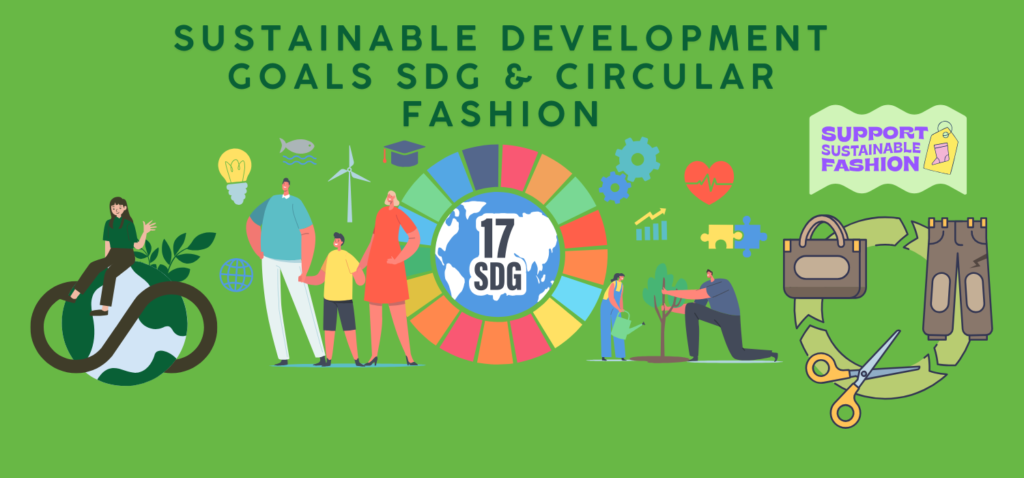The fashion and apparel industry has a seen a tremendous leap when it comes to sustainable development goals, this industry pivotal shift towards more sustainable and eco-conscious practices has led many astute companies to go green and adopt more green practices in fashion niches.
When it comes to circular fashion which aims to mitigate waste and pollution while promoting regenerative practices in the form of reduce reuse and recycle practices, for this movement towards circularity within fashion industry one of the key drivers is the adoption and usage of renewable fibres, which offer the industry a path away from finite, synthetic resources toward sustainable, biodegradable alternatives that promote sustainability and sustainable development.
The United Nations’ Sustainable Development Goals (SDGs) even which is not a sustainable ratification or a legally binding contracts among the countries but has some way or the other had made different types of companies to embody the concept of circular economy as part of their daily business operation as part of the company’s CSR corporate social responsibility and other sustainable policies.
The concept of circular fashion in the fashion industry that aligns closely with the United Nations’ Sustainable Development Goals (SDGs) are a set of 17 sustainable development goals established to address the impeding global challenges by 2030. Circular fashion has core focus on reducing waste and extending product lifecycles that contributes to SDGs like climate action, responsible consumption and production, clean water and sanitation.
This blog explores how circular fashion, propelled by renewable fibres, supports the SDGs, transforming the fashion industry in an era where sustainability is no longer optional but imperative.
The Fashion Industry’s Environmental Impact
The fashion is one of the world’s most resource-intensive industries. At every stage of the garment lifecycle that begins from sourcing to manufacturing, distribution, usage, and disposal, contributes to pollution and resource depletion. Some of the key environment and environmental pollution associated with fashion include:
1. Water Consumption: The fashion industry is one among the others that is a huge consumer of water globally. According to common objective it is estimated that currently the fashion industry uses around 93 billion cubic meters of water per year that is 4% of all freshwater extraction worldwide. On an average it takes 10,000-20,000 liters of water to cultivate one kilogram of raw cotton which depends on where its grown.
The production of a single cotton t-shirt can require over 2,700 litters of water—equivalent to what one person drinks over a 2.5-year period as per EU reports. This level of water usage places tremendous strain on freshwater resources, especially in regions prone to drought or with limited water access.
2. Waste Generation : The fashion industry produces an overwhelming and staggering volume of waste that constitutes to a concerning global waste management crisis. Every year, millions of tons of clothing are piled up in landfills or are incinerated that is not just limited to air pollution but contributing to overall environmental pollution and wasting valuable resources.
As per Royalwaste in the 2023 the of fashion industry had produced an astounding figure of 97 million tons of waste annually out of which 18 million were leftover textiles of, 2.5 million were chemical waste, and the rest 3 million comprised of packaging materials that can be anything e.g.: plastic packing bag or carton boxes for packing, where such disconcerting patters reflect a surge in fast fashion’s contributions.
The proliferation of fast fashion as part of trend and fashion that unfolds as a trendsetter in the recent past has associated with rapid production cycles inexpensive and trendy clothing that has led to an ephemeral usage pattern of clothes as the customers buy new clothes when there is shift in trend of fashion and apparel industry.
Consumers procure such trending assortment of fashion and wear such items for fleeting periods, with some garments discarded after just a few uses. Fast fashion encourages a culture of disposability, where clothing is worn only a few times before being discarded. This leads to massive amounts of textile waste, much of which ends up in landfills or is incinerated, releasing harmful pollutants.
3. Chemical Pollution: Chemical pollution is an important concern in the fashion industry that primarily due to the extensive use of toxic substances during the production cycle. It begins from cultivation of raw materials to the dyeing and finishing of garments, chemicals such as pesticides, fertilizers, and heavy metals are commonly employed.
For example, when it comes conventional cotton farming the process production process relies heavily on synthetic pesticides and fertilizers, which is not just confined to the serious issue of degradation of soil health but also contaminate local water sources that harms aquatic ecosystems and human health.
According to millionmaker Only 1% of the 85,000+ commercially-used chemicals have been tested for human and environmental safety efficiently. Textile production uses various chemicals that can pollute water bodies and soil. On the other hand, dyes, treatments, and finishes contain hazardous substances harm ecosystems and pose health risks to factory workers.
4. Carbon Emissions: The fashion industry is responsible for around 10% of global greenhouse gas emissions, with emissions generated across the supply chain, including fiber production, manufacturing, transportation, and waste disposal. These greenhouse gas emissions are generated at nearly every stage of the garment lifecycle, from the energy-intensive processes of fiber production and textile manufacturing to the global logistics and transportation required to transport finished products. The production of synthetic fibres like polyester, is especially carbon-heavy which relies heavily on fossil fuel. According to McKinsey research the fashion industry has contributed to almost 2.1 billion metric tons of greenhouse-gas (GHG) emissions in 2018, that is about 4 percent of the global total greenhouse gas emissions.
What is Circular Fashion?
Circular fashion is a sustainable development goal and an eco-conscious approach in terms of designing, producing, and consuming fashion that focuses to minimize waste and environmental foot print by keeping garments and materials in continuous use.
Unlike the traditional linear model that follow the concept of “take-make-dispose” approach, the circular fashion on the other hand aims to create a closed-loop framework where clothing is designed for durability, repair, and recyclability. This model emphasizes using renewable, biodegradable, or recyclable materials, along with efficient production methods that reduce resource consumption, pollution, and carbon emissions.
Some key principles of circular economy
- Design for Longevity: One of the foundational principal circular fashions that focuses on creating garments that are meant to last not just in terms of durability but in style. Creating garments that are durable and timeless, reducing the frequency of replacement where such clothes are uninfluenced by any fashion trends.
- This approach involves designing and crafting clothing with high-quality materials and craftsmanship to ensure that pieces can withstand frequent use and remain resilient over time.
- Use of Renewable Fibers: Utilizing materials that can be regenerated, decomposed, or be easily recycled comes under the category of renewable fibres.
- The use of renewable fibres is central to circular fashion, as it focuses on materials that can either regenerate naturally, decompose without harming the environment, or be recycled into new products at the end of their lifecycle. Renewable fibres come from sources that replenish over time, like plants, trees, or other organic matter, and they are often chosen for their ability to lessen reliance on non-renewable resources, such as petroleum-based synthetics like polyester.
- Waste Reduction: In the circular fashion, waste reduction is achieved through various methods, including eco-design, eco friendly products, eco friendly packaging, and overall, environmentally friendly materials which prioritizes on minimizing waste at every stage of the garment lifecycle from production to end-of-life disposal. Modular design techniques, that has detachable and attachable elements which can be easily removed, swapped out or has high amount of customizability resulting in creation of clothes of different styles and the use of mono-materials (single types of fibers) allow easier recycling and prevent waste accumulation. This includes creating garments intended to last longer, prioritizing quality over quantity, and designing with repair, reuse, and recyclability in mind.
- Resource Efficiency: Optimizing the use of resources in production, reducing water and energy consumption. Resource efficiency is a foundational principle in circular fashion, focusing on maximizing the use of resources throughout the lifecycle of a garment while minimizing waste, energy use, and environmental impact. In a circular fashion system, the emphasis is on designing, producing, and consuming clothing in ways that utilize the least amount of water, energy, and raw materials possible.
- This often includes using eco-friendly dyes, optimizing material cutting patterns to reduce fabric waste, and adopting energy-efficient technologies in manufacturing processes. The resource efficiency is achieved by carefully managing energy, water, raw materials, and other inputs from design through to disposal, thereby reducing environmental impact. This approach considers how each stage of production can use fewer resources or find alternatives that have a lower footprint. This considerably lowers wastage of resources and increases efficiency thereby promoting sustainable development goals.
Renewable Fibers, Circular Fashion and sustainable development goals
Renewable fibers are materials derived from natural, sustainable sources that can be replenished over time, making them an eco-friendly choice for various industries, especially fashion. Unlike synthetic fibers made from petroleum-based products, renewable fibers come from plants, animals, or other organic sources that regenerate either through cultivation or natural growth cycles. Common examples include organic cotton, hemp, bamboo, wool, and cellulose-based fibers like Tencel (derived from wood pulp).
These fibers offer significant environmental benefits: they typically require less energy and fewer chemicals to produce, and they have a smaller carbon footprint than non-renewable counterparts. Additionally, renewable fibers are often biodegradable, which means they decompose more readily at the end of their life cycle, reducing waste and pollution.
In the context of circular fashion, renewable fibers are valued for their low impact, durability, and potential to be recycled or composted, supporting a system where resources are continuously cycled, not disposed of. By choosing renewable fibers, the fashion industry can take steps toward sustainability development goals, minimizing resource depletion and promoting a more environmentally responsible approach to production and consumption.
Types of Renewable Fibers in Circular Fashion
1.Organic Cotton: The traditional cotton is more resource-intensive whereas organic cotton is grown without synthetic pesticides or fertilizers, reducing pollution of water resources and promoting soil health and soil quality. Organic cotton fabric has a lower environmental impact and these practices protect biodiversity, conserve water, and reduce pollution, as chemical runoff from traditional cotton farming often contaminates rivers, lakes, and groundwater. In the fashion industry, organic cotton fabric material is used to create clothing, bedding, and other textile products that can appeal and grab attention of eco-conscious customers. The soft, breathable qualities make it suitable for various applications and are biodegradable, reducing textile waste thus helps to achieve sustainable development goals.
2. Bamboo: Bamboo is kind of renewable fiber that has become widely popular in sustainable fashion due to its fast-sprouting nature with minimal environmental requirements. Bamboo can thrive in diverse climates without the need for synthetic pesticides, herbicides, or large amounts of water, making it an environmentally friendly alternative to conventional fibers. The mechanical process is more eco-friendly but costly, as it requires labor-intensive crushing, natural enzymes, and fiber extraction, resulting in bamboo linen, which is highly durable and biodegradable.
3. Lyocell (Tencel): Lyocell, branded as Tencel, is a cellulose-based fiber derived from wood pulp. It is produced in a closed-loop system that recycles water and solvents, making it one of the most eco-friendly renewable fibers available. Lyocell is biodegradable, breathable, and suitable for various clothing applications. Unlike many other cellulose-based fibres, Lyocell production relies on a non-toxic organic solvent that can be reused, making it an eco-friendlier option.
4. Recycled Fibers: Recycled fibres are made from post-consumer waste, such as recycled polyester from plastic bottles, reduce the need for virgin materials and help prevent plastic waste from ending up in oceans and landfills. While synthetic, recycled polyester represents a circular approach by reusing materials that would otherwise contribute to environmental pollution.
Innovations and Circular Models in Renewable Fiber Production that follows Sustainable Development Goals SDG
Renewable fiber production is evolving rapidly, with new technologies enhancing sustainability in the fashion industry. Some innovations include:
1.Closed-Loop Systems: A closed-loop system is production system where textile materials are circulated in a loop for a prolonged period where the major focus is set on recycling practices. The fibres produced through the closed-loop process, are used in later in open-loop. The initial process of circular fashion similar to regular textile production that begins with sourcing of raw materials where products are made through weaving/knitting, dyeing, final inspection, and so on. The discarded materials are collected through recycling programs.
2. Biodegradable and Compostable Fibers: Companies are developing fibres that break down naturally, leaving minimal impact on the environment. For example, Natural fibres, like jute, hemp or cotton, are biodegradable and even includes some viscose based materials.
3. Recycling and Upcycling: Technologies that recycle post-consumer textiles into new fibres reduce waste and minimize the need for virgin materials. Mechanical recycling of natural fibres and chemical recycling of synthetic fibres (e.g., recycled polyester) enable the industry to reuse resources effectively.
Circular Fashion Data Reports
According to Insightaceanalytic the market value in 2023 is 6.67 Bn with a CAGR rate of 8.97% from 2024 to 2031. According to CIKIS STUDIO with regard to country of origin 80 per cent of the 200 brands analyzed in the Circular Fashion Index 2023 from countries like United States, France, Italy, India, Germany and the United Kingdom and among such nations French brands have scored highest average score followed by United States and Germany. The brands from United States that are in the top 10: Patagonia, Levi’s, The North Face, Madewell and Coach. The German brands consist of Adidas, Hugo Boss, C&A that are in the top quartile.
Conclusion
The transformation of the fashion industry toward a circular model rooted in renewable fibres is essential for achieving the Sustainable Development Goals SDG and addressing the environmental crises associated with fast fashion. Circular fashion promotes a regenerative approach that prioritizes sustainability, minimizes waste, and reduces the industry’s reliance on finite resources. Renewable fibres lie at the heart of this transformation, offering a pathway to responsible consumption, climate action, and environmental conservation. While challenges remain, innovations in sustainable fiber production and circular models are paving the way for a fashion industry that respects the planet and its people.



